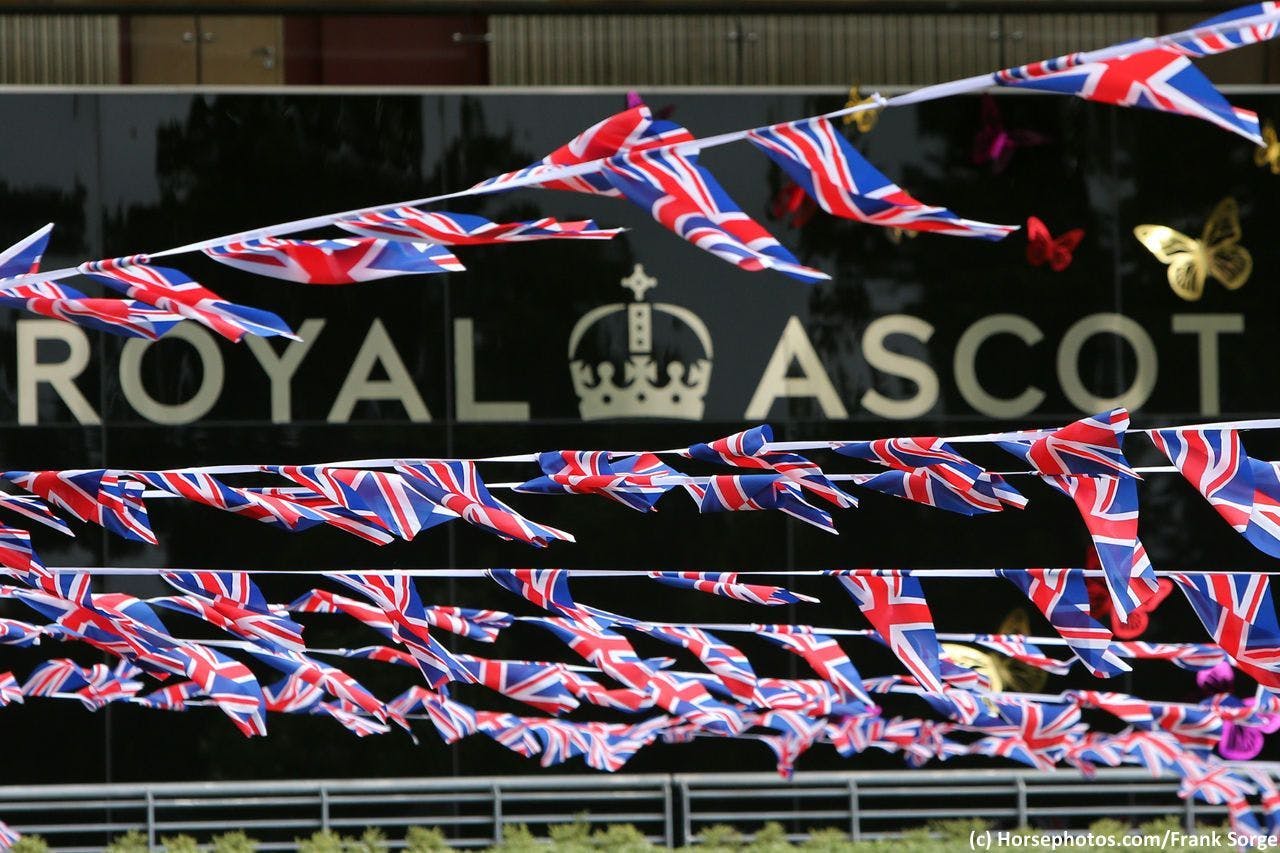Who is the best Ascot Gold Cup winner?

Royal Ascot. (Photo by Horsephotos.com/Frank Sorge)
Royal Ascot is the highlight of the British racing season, and the Gold Cup (G1) is the highlight of Royal Ascot. The Gold Cup has been run since 1807, and at two miles, three furlongs, and 210 yards it is one of the world's great staying tests.
Let's revisit some of the greatest winners in this race's history. Then, it's up to you to determine — who is the greatest Gold Cup winner?
Fisherman (1858, 1859)
Any stayer must have a certain hardy quality, but few exemplified that like Fisherman.
He was born in 1853 and raced through the middle and late stages of that decade. Records differ as to whether he started 121 or 136 times during the course of his career, with somewhere between 67 and 70 wins.
Those wins included a win in the Queen's Vase at Royal Ascot in 1856, as well as pair of triumphs in the Gold Cup, 1858 and 1859. After he won his first Gold Cup, he showed right back up the very next day to contest a Queen's Plate over three miles. Fisherman won that, too.
In 1860, he was exported to Australia to stand stud. Though he only lived long enough to produce five crops, he was a top-level sire in Australia, with progeny including Victoria Derby winners Angler, Sea Gull, and My Dream.
Sagaro (1975, 1976, 1977)
There is every reason why Ascot Racecourse's local prep for the Gold Cup is call the Sagaro S (G3). Few horses have shined in the race like he did.
The French-trained horse was the first to win three editions of the Gold Cup. His first Gold Cup win came in 1975, when he romped over the classy Le Bavard.
Sagaro had to dig deep the next year. He turned for home in second-last in 1976, but tipped out into the lane, bore down, and fought past Crash Course. Though that was his closest Gold Cup win, 1976 was also his best season, as he also won the Prix de Barbeville and the Prix du Cadran in his home country.
In 1977, he vied for his third Gold Cup. On the turn for home, Buckskin looked to be going strong on a clear lead, but Sagaro drew closer, headed him with a furlong to go, and ran clear to win with authority.
Stradivarius (2018, 2019, 2020)
It isn't often a horse still in training makes an all-time great list, but Stradivarius has already done enough to join the annals of the Gold Cup's best.
He emerged a top-class stayer when he defeated Big Orange in the 2017 Goodwood Cup (G1), his first Group 1 try. Already a Royal Ascot winner in 2017, when he defeated three-year-olds in the Queen's Vase (G2), Stradivarius tried the Gold Cup for the first time at age four, and held off the more experienced Vazirabad to win. He finished that season undefeated in five starts, including a repeat in the Goodwood Cup.
The 2019 season brought more success, including his second Gold Cup and third Goodwood Cup. He finished a nose shy of perfection in 2019, just behind Kew Gardens in the British Champions Long Distance Cup (G2).
Stradivarius only won twice from six starts in 2020, but he won his signature races. He romped by 10 lengths, over Nayef Road, to win his third Gold Cup at Royal Ascot, and took his fourth Goodwood Cup by a length, over the same foe.
Stradivarius looked his old self in the Sagaro on April 28, and will try to become the second horse to win four Gold Cups.
Touchstone (1836, 1837)
Touchstone's entry to the top echelon of English racing came as a surprise to many. In the 1834 St. Leger he was a 50-1 longshot, behind unbeaten Derby winner Plenipotentiary and General Chassé, to whom Touchstone had run second in the Liverpool St. Leger. Yet it was Touchstone who drew two lengths clear to win the classic.
He emerged as the best stayer in England at age four, with victories including the Doncaster Cup. At five, he won his first Gold Cup and his second Doncaster Cup. At six he had little else to prove, but returned for another tilt at the Gold Cup. He saluted with a repeat and won by six lengths.
Touchstone won 16 of his 21 starts, including seven by walkover. He proved an important sire, as nine of his foals won a total of 12 classics. His sons Orlando and Newminster went on to be important sires. Newminster was out of Beeswing, a mare Touchstone defeated in the 1836 Doncaster Cup, and who herself won the Gold Cup in 1842.
Yeats (2006, 2007, 2008, 2009)
Yeats set the new standard, with four straight victories in the Gold Cup.
He was lightly raced at age two and three, but was undefeated through that time. He became a top-level winner at four, over a mile and a half, when he won the Coronation Cup (G1) at Epsom.
But at five, he joined the ranks of the top stayers. In his first start of 2006, he won the Gold Cup, when he ran clear to win by four lengths at 7-1 odds, theb backed that up in the Goodwood Cup.
The next three years, he was favored in the Gold Cup, and ran to it every time. He won clear of Geordieland in 2007 and 2008, and streaked home to win 3 1/2 lengths clear of Patkai in 2009.
Looking back to last week, we asked you the best horse to win the Kentucky Derby and the Preakness, but not the Belmont. In a decision almost as clear as his career-crowning Woodward S. (G1) walkover, Spectacular Bid won with 62% of the vote, well clear of Northern Dancer in second at 16%.
ADVERTISEMENT



